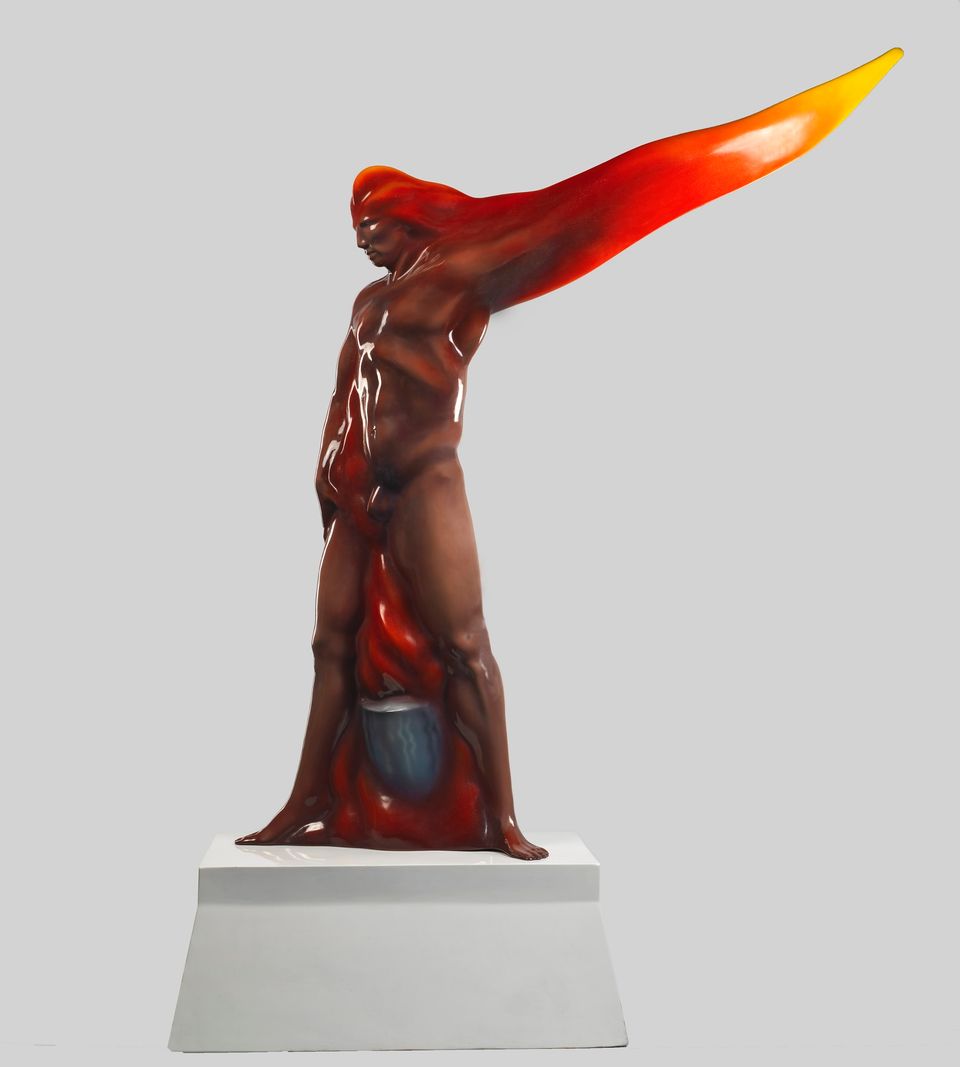
Luis Jiménez, Man on Fire, 1969, fiberglass in acrylic urethane resin on painted wood fiberboard base, Smithsonian American Art Museum
About this Artwork
Jiménez’s Man on Fire recasts an iconic Native American in contemporary terms. Employing a pop art style of slick, hot-rod surfaces, the artist conflated references to Cuauhtémoc, the Aztec ruler tortured by fire during the Spanish conquest, and Thich Quang Duc, the Buddhist monk who set himself ablaze in protest against the Vietnam War. For Jiménez, the monk’s act resonated with the rising antiwar sentiment in many Latino communities. Jiménez’s brown figure—which was also a self-portrait—also asserts the Native identity of Chicanos and the community’s roots in the Southwest prior to 1848.
Acerca de esta obra
La obra Man of Fire, de Jiménez reinterpreta un ícono indígena en términos contemporáneos. Utilizando un estilo del arte pop con superficies industriales semejantes a los autos deportivos, el artista hace referencia a Cuauhtémoc, el emperador azteca torturado con fuego por los conquistadores españoles, y a Thich Quang Duc, el monje budista que se prendió fuego en protesta contra la guerra de Vietnam. Para Jiménez, la acción del monje tuvo eco en el sentimiento antibélico creciente de muchas comunidades latinas. La figura de tez oscura hecha por Jiménez ―que era también su autorretrato― reafirma la identidad indígena de los chicanos y las raíces de esta comunidad en el suroeste de los Estados Unidos antes de 1848.













